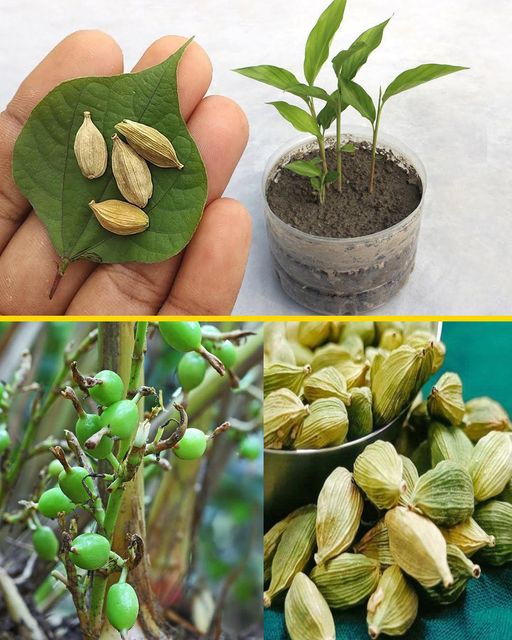How to grow Cardamom/Ilachi at home in containers from Seed…Anyone can do it

What You’ll Need:
Before you embark on your cardamom-growing journey, gather the following materials:
- Cardamom Seeds: You can purchase cardamom seeds from a reputable supplier or use seeds from store-bought cardamom pods.
- A Pot: Choose a pot that is at least 12 inches in diameter and has good drainage. Cardamom plants require space to grow and good drainage to prevent waterlogging.
- Potting Mix: Opt for a well-draining potting mix with a neutral pH.
- Warm and Humid Environment: Cardamom plants thrive in warm, humid conditions. Consider using a humidity tray or a humidifier, especially if you live in a dry climate.
- Indirect Sunlight: Cardamom plants prefer bright, indirect sunlight. Place your pot near a window with filtered sunlight or use sheer curtains to diffuse the light.
Step 1: Germinating the Seeds
- Prepare the Seeds: If you’re using cardamom pods, remove the seeds from the pods. Soak the seeds in warm water for 24 hours to soften the seed coat.
- Plant the Seeds: Fill your pot with the potting mix, leaving about an inch of space at the top. Plant the seeds about half an inch deep, spacing them 2-3 inches apart.
- Water Thoroughly: Water the pot thoroughly after planting. Ensure the soil is evenly moist, but not waterlogged.
- Cover the Pot: Cover the pot with a plastic wrap or a plastic lid to create a mini greenhouse effect. This will help maintain the necessary humidity levels.
- Maintain Warmth: Place the pot in a warm location, ideally around 70-80°F (21-27°C). You can use a heating mat to maintain the temperature.
Step 2: Caring for Your Cardamom Plant
- Provide Indirect Sunlight: As soon as you see seedlings emerging (which can take several weeks), move the pot to a location with bright, indirect sunlight.
- Maintain Humidity: Continue to monitor humidity levels. If you notice that the plastic wrap or lid is creating excessive moisture, you can prop it open slightly to allow for some ventilation.
- Water Carefully: Keep the soil consistently moist but not soggy. Overwatering can lead to root rot, so it’s crucial to strike the right balance.
- Fertilize Sparingly: Once the plants have grown a bit, you can start feeding them with a balanced liquid fertilizer diluted to half strength. Fertilize every 2-3 months during the growing season (spring and summer).
- Repot as Needed: As the cardamom plant grows, you may need to repot it into a larger container. This will give the roots more space to grow.
- Pruning and Harvesting: Prune your cardamom plant as needed to encourage bushy growth. You can start harvesting pods when the plant is around 2-3 years old.
Pages: 1 2